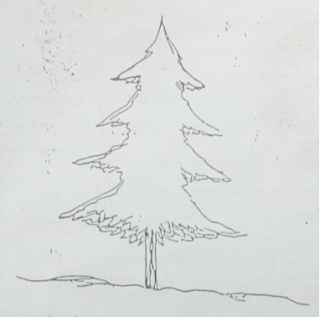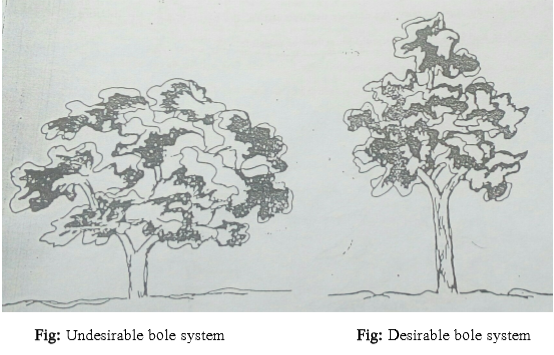Characteristics of an ideal tree for an agroforestry system
An ideal tree for an agroforestry system should be examined with respect to its
Root characteristics.
Crown characteristics.
Bole characteristics.
Phenological characteristics.
Nutrition and water absorption characteristics.
Growth characteristics.
Shelter to insect, pest and disease.
Root characteristics
When woody perennials are grown with annual crops, it is necessary that root distribution of trees should be below 40 cm soil layers as most of the annual crops have their roots distribution in the upper 30-40 cm soil layers. If tree roots are distributed on the surface layer of the soil, they will not only compete with agricultural crops for nutrient and water but also cause obstruction in normal soil working.
Crown characteristics
The characteristics of a crown which are important from the Agroforestry point of view include (i) Density (ii) Size (iii) Shape (iv) Height etc. Trees having a dense crown do not permit enough light on the soil which adversely affects the process of photosynthesis in agricultural crops. The trees therefore, should have light crown which will permit enough light in the ground for photosynthesis activity of agricultural crops. Several trees such as Eucalyptus , Embhca , Acacia etc have a lighter crown than Mangifera , Tectona and Dalbergia etc in agroforestry. The smaller tree crown, the better for the mixture. The crown size and bole diameter should be as low as possible.
Bole Characteristics
The tree bole should be straight and long so that it can minimum shade to the surrounding crops. Several trees such as Eucalyptus , Casuarina etc have a long clear bole. The trees should have self pruning characteristics. If not they should tolerate a high incidence of artificial pruning, Dalbergia sissoo is good example of such tree which tolerate severe pruning, develop a relatively clear bole and produce quality timber.
Phenological characteristics
Phenological characteristics particularly leaf falls, emergence of new leaf, phyllotaxies etc are considered for selection of trees. Deciduous trees are especially suitable for this purpose because the competition for light, nutrient and moisture are less during the period of leaflessness. Therefore, the longer the period of leaflessness, the better for the growth of agricultural crops. Again, leaf litter of deciduous trees adds organic matter in soil and help to maintain sustainability of the productivity of the soil.
Nutrition and water requirement
Woody perennials when grown with agricultural crops it should be such that the requirement of water and nutrient are minimum. Growth characteristics The species selected for Agroforestry should essentially be fast growing. It should be able to withstand competition during early stage particularly when species are being selected for inter cropping. The trees should be capable of withstanding lopping, pruning and browsing.
Shelter to insect, pest and disease
The trees selected for agroforestry system should not harbour such insect, pests and disease which may damage the agricultural crops growing in association with it.
Above all are the characteristics of an ideal tree for an agroforestry system

You can read more articles about Agro-forestry
Useful Agricultural Websites



